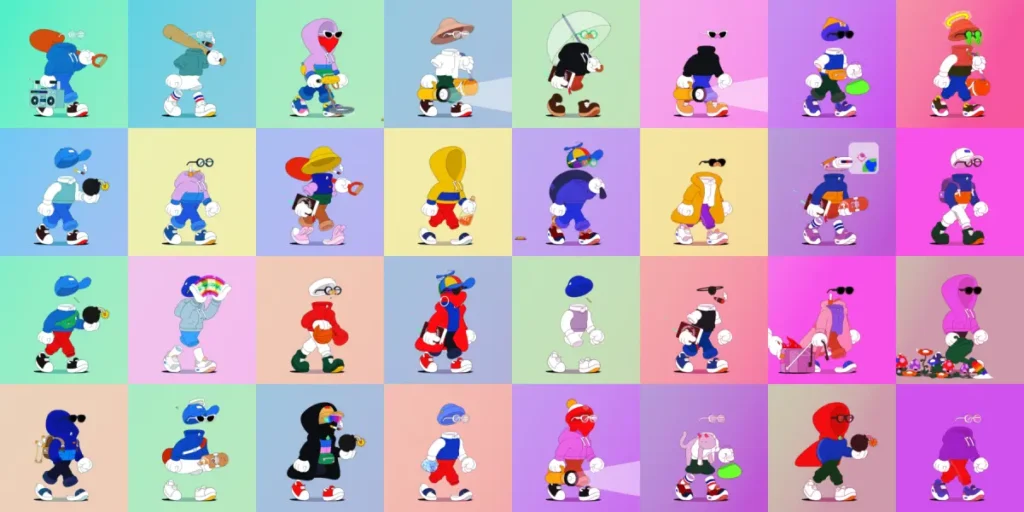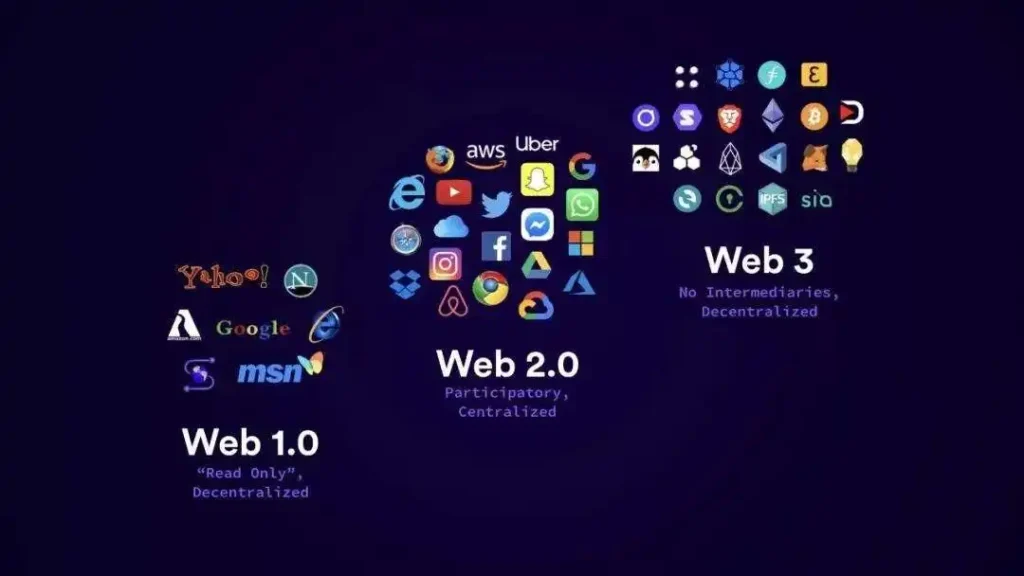If you’re reading this, chances are you’re already familiar with Web3, but if you need a quick refresher, you’re in luck!
In simple terms, Web3 is the next phase of the internet after Web2 (the version we use today).
The idea was born in 2014 and is characterised by user ownership; meaning you have more control over your data, the blockchain technology, which is a ‘healthier’ way to keep track of information online, and introduces digital tokens as reward systems. It’s no wonder it’s generating so much excitement!
But past the excitement and all, how can you launch a career in the Web3 space?
Again, you’re lucky! We sat down with Helen Obika, Web3 Designer, and Tina E., Web3 Community Moderator, to answer 8 burning questions every beginner has. Their insights will provide you with a roadmap to becoming a ‘Web3 professional’.
Let’s jump right into question 1!
Read Also: 50 Web3 terms everyone must know
Is Web3 all hype or are there real opportunities?
A shift in how we interact with technology could represent real opportunities. Take the iPhone’s success story, for example. After it launched in 2007, it set a new standard for the way we communicate, work, and entertain ourselves, and also created entirely new industries and job opportunities. Similarly, Web3 has the potential to open up new avenues for innovation and economic growth. However, the opportunities it presents are layered.
Tina explains that there’s a critical need to differentiate between genuine innovation and fraudulent schemes in the Web3 space. This is particularly true as Web3’s promise of decentralisation attracts both legitimate builders and opportunists. In July 2024 alone, Salus reports that over $279 million was lost across 25+ incidents—a figure more than double that of the previous month.
In Nigeria for example, Obika points out that there’s a thriving Web3 ecosystem driven by blockchain adoption across sectors like finance, social networking and art. While the scene grows, understanding how to identify sustainable projects is essential to navigating this space effectively.

What’s the most important thing for beginners to focus on?
For beginners, the first thing to do is to build a strong foundation, which will give you the confidence you need to explore further. Tina advises starting with the fundamentals of Web3, particularly understanding the concept of decentralisation and how it underpins technologies like blockchain. From there, narrowing your focus to a specific niche—whether it’s Decentralised Finance (DeFi), Non-Fungible Tokens (NFTs), or Decentralised Autonomous Organizations (DAOs)—can help you avoid the overwhelm of Web3.
Highlighting her journey, she says that eventually focusing on community moderation within DAOs allowed her to hone her skills in managing decentralised communities, facilitating discussions, and becoming a valuable contributor to several DAO projects.
Still on the overwhelm of the vastness of Web 3.0, Obika emphasises on the importance of mastering a core skill first, such as design, writing or marketing. That way, you’re able to choose, sift and focus on a clear path. Your expertise in a core skill is what will help you stand out especially when job-hunting.

How can one learn the ropes, and is it difficult?
As with any new subject, learning Web3 is undeniably challenging. Tina candidly shares that the process can be “tiring and frustrating,” but emphasises that focusing on incremental growth makes it manageable. Basically, by consistently studying online resources and applying what you learn. And one practical way to do this is by contributing to small projects and open-source initiatives—hands-on experience is invaluable. The web3 communities you become a part of can not be for show, they’re a goldmine of information and support. Active participation can significantly ease your learning curve.
For beginners, Obika breaks the journey into “four pillars” to help you navigate Web3 roles: technical know-how, design skills, tools, and business understanding. Say you want to venture into her niche, graphic design but with a focus on NFTs, here’s a potential roadmap:
– Step 1: Understand the concept of NFTs and their applications in the Web3 space.
- Step 2: Master the basics of visual design, branding and identity design to create unique visual identities for NFT Web3 projects.
- Step 3: Get familiar with design tools like Adobe Photoshop, blockchain-specific tools like Blender, and collaboration tools like Miro
- Step 4: Understand different ways to monetise your skills and etcetera
Additionally, finding your community can ease the learning curve. General groups like Web3 Nigeria and Web3ladies, or niche ones like Memoiafrica, often host vibrant discussions on platforms like Discord and X for the sole purpose of connecting learners with experienced professionals and making the journey smoother.
Should I specialise in a web3 niche or just be really good at my thing?
This particular question depends largely on your long-term goals. Tina advocates for niche specialisation, arguing that Web3 thrives on focused expertise. Whether it’s smart contract development, blockchain security, or DAO governance, carving out a clear niche as you learn Web3 can make you indispensable.
Obika, on the other hand, sees value in branding yourself as a Web3 generalist early on. As Steve Case of Revolution LLC, aptly put it, having a generalist perspective allows you to “see through the forest and the trees” and navigate uncertainty with a broader understanding.
Obika believes that exploring diverse aspects of Web3 while honing your core skill makes you adaptable to the industry’s evolving needs. Ultimately, the choice depends on your strengths and the market’s demands.
A great way to approach this is by starting as a generalist to build a strong foundation, then narrowing your focus as the industry matures to help you stand out.
Does my Web2 experience give me an advantage?
Absolutely. Tina confirms that Web2 skills like design, software development, and project management are not just transferable but foundational in Web3. Many blockchain projects still depend on these core abilities, with an added layer of blockchain-specific knowledge.
Obika agrees, highlighting that Web3’s success depends on its ability to appeal to a broader audience. Oftentimes when you visit a web3 site, you’ll notice that certain projects only want to mirror the complexity of blockchain in their design, which can frustrate users that are not familiar with the game.
Marketers emphasise how a poorly designed website with confusing user flows can hinder adoption rates. A UX designer, for instance, can simplify DeFi platforms by reimagining interfaces to make smart contracts and asset management more approachable, using familiar Web2 design elements to guide users smoothly through complex tasks.
Your Web2 experience doesn’t just transfer—it positions you as a key player in creating Web3 platforms that people want to use.

Must I join a Web3 community?
Absolutely. Web3 thrives on community and is practically a must-have for anyone serious about breaking into this space. It’s where innovation happens, and how you grow.
Tina highlights platforms like X, Telegram, and Discord as essential hubs for networking, learning and staying informed. But it’s more than just connections—these communities have become breeding grounds for new projects and ideas. They’ve even sparked the creation of entirely new roles, like shillers, node validators, collectors, and educators—roles you might not find in the traditional tech world.
Obika adds that active participation is key. By sharing insights, asking questions, and engaging in discussions, you establish yourself as a trusted and valuable contributor in your niche. That’s one way to beat the crazy job market and if you’re fortunate even mentorship from experienced professionals.
Where can I find good learning materials?
The Web3 learning curve can be challenging, but good resources are abundant and the learning never ends. Obika recommends self-paced learning and the importance of “doing your own research” (DYOR), encouraging you to pair tutorials with practical experiences, such as creating a wallet or interacting with a smart contract. YouTube channels like Whiteboard Crypto and Dr. Angela Yu’s developer playlists are highly rated.
Your community plays a key role here as well. Don’t shy away from asking senior professionals for course recommendations that align with your goals.
Will the bear market affect my job?
It might, but it’s not all bad news. Obika highlights that while opportunities may shrink due to funding cuts, blockchain adoption, especially in DeFi, GameFi, and tokenization, will continue to grow. This makes it an ideal time to focus on building skills.
Tina advises aligning with sustainable projects (i.e. ventures prioritising innovation over speculation) and connecting with industry leaders. The 2024 Proof of Search report adds that companies weathering the storm are likely to emerge stronger, with rising salaries and new opportunities in regional hubs for professionals ready to adapt and innovate.
Conclusion
Web3 has plenty to offer, but it’s not a get-rich-quick path. Your success will come down to how well you combine steady learning, hands-on experience, and making real connections with others.
Stick to your strategy, keep a curious mindset, and you’ll be in a good spot to grow as a Web3 pro.
*Name changed to protect identity.
Get passive updates on African tech & startups
View and choose the stories to interact with on our WhatsApp Channel
Explore




